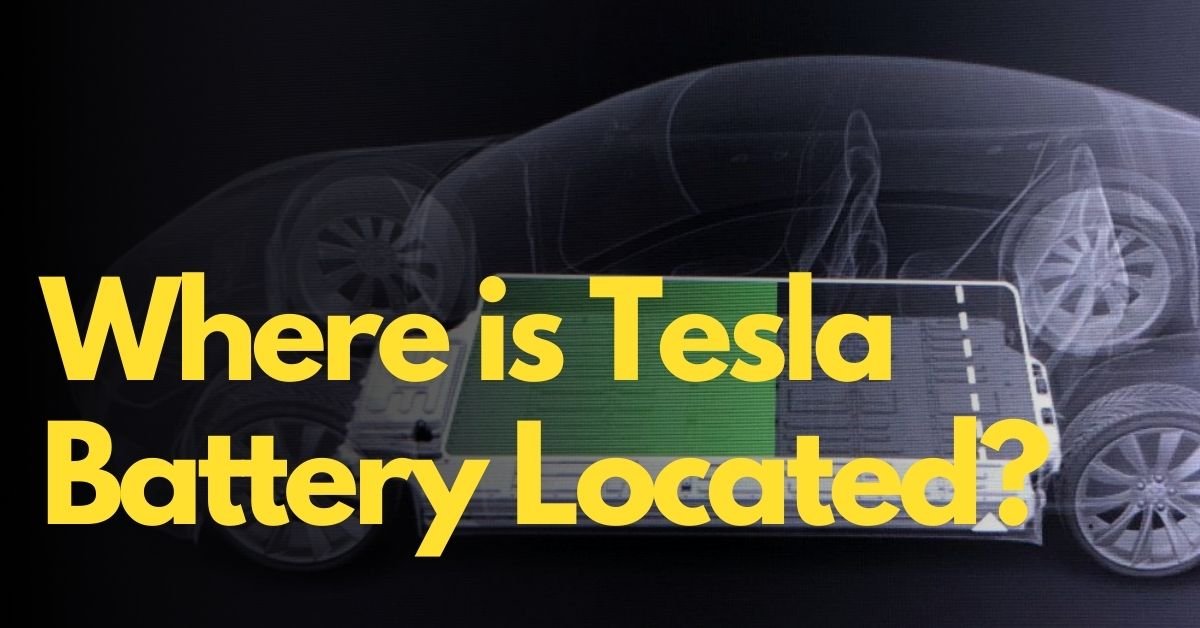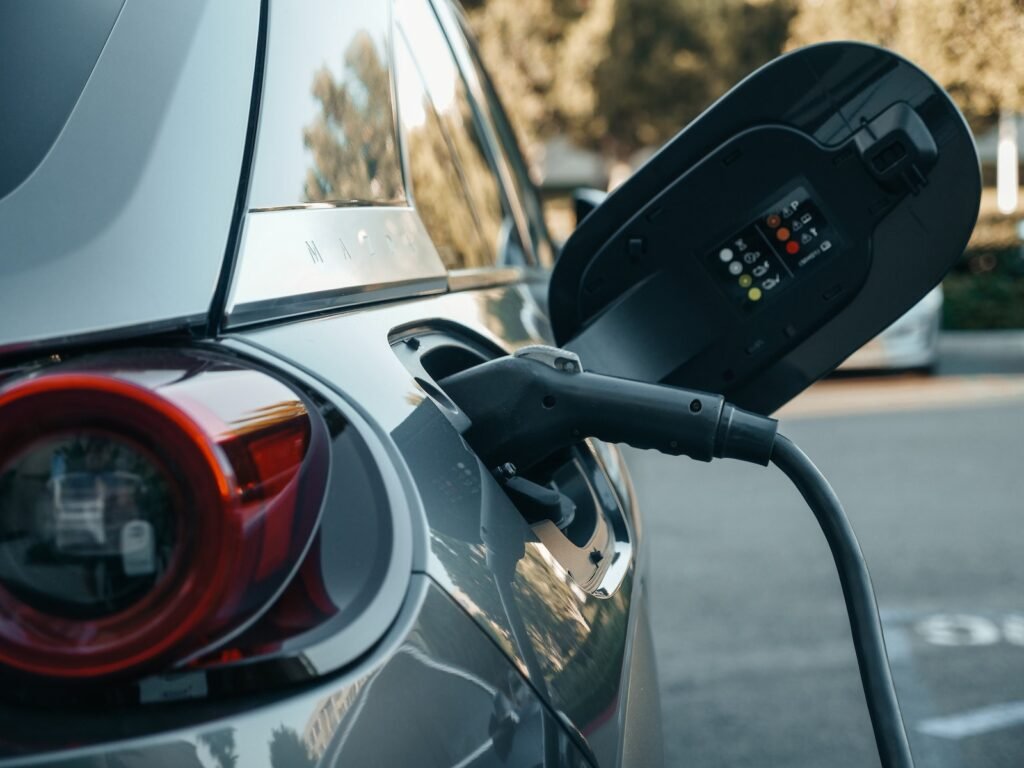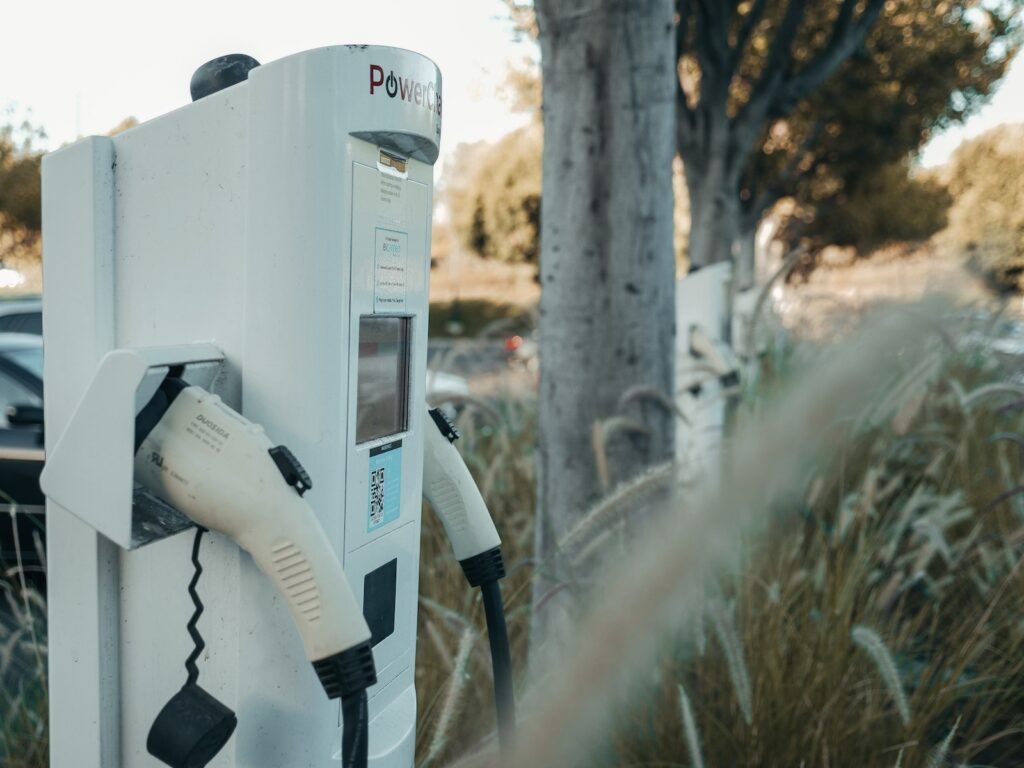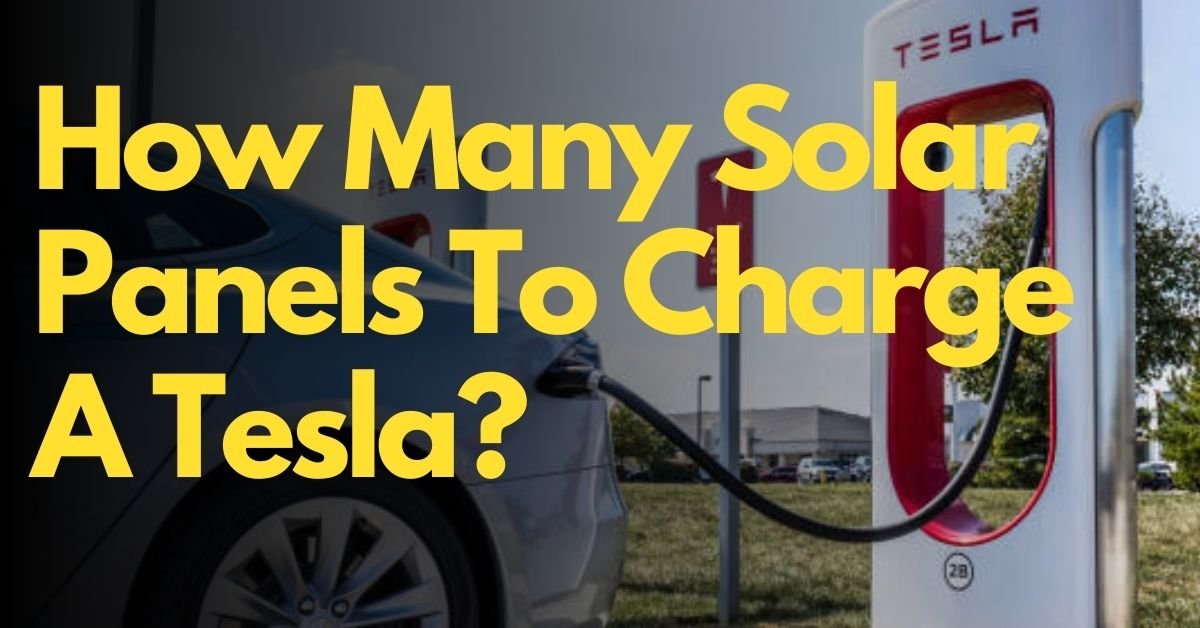Where is Tesla Battery Located?

When it comes to electric vehicles, Tesla is a name that frequently stands out. Many curious minds often wonder, Where is Tesla battery located? This question is not just about the physical placement of the battery pack in a Tesla, but it delves into the very core of what makes a Tesla car unique.
In this exploration, we will not only pinpoint the precise location of the battery within a Tesla but also uncover the significance of this placement within the chassis of a Tesla model, particularly the popular Tesla Model 3.
Additionally, we will touch upon the conventional and electric aspects of Tesla’s battery technology, offering you a tip or two on how to care for the 12-volt battery in your Tesla vehicle. So, let’s embark on this enlightening journey to discover where the Tesla battery is truly located and why it matters.
Understanding the Tesla Battery
What is the Tesla Battery?
The Tesla Battery is like a big, powerful heart for Tesla electric cars. Just like our heart pumps blood to keep us alive, the Tesla Battery provides the energy to make Tesla cars go.
Inside the Tesla Battery are thousands of special cells that store electricity. These cells work together to power the car’s electric motor, making it move without needing gasoline.
Importance of the Tesla Battery
The Tesla Battery is super important for a few reasons:
- Clean Energy: Tesla Batteries help our environment by using electricity instead of gas. This means they don’t cause harmful pollution, which is good for our planet.
- Saving Money: Since Tesla cars use electricity, they cost less to run than traditional cars with gas. This can save people money in the long run.
- Quiet and Smooth: Tesla cars are known for being quiet and smooth because of the battery. They don’t make loud engine noises like gas cars.
- Safety: Tesla places the battery on the car’s floor, making the car stable and safe. It also helps protect the battery from damage.

Where is Tesla battery located?
Tesla electric cars use large batteries to power their electric motors. These batteries are a crucial part of the car because they store the electricity needed for the car to run. The location of the battery in Tesla vehicles is quite unique and has some important benefits.
Battery Placement in Tesla Model 3:
In the Tesla Model 3, which is one of Tesla’s popular electric cars, the battery is positioned underneath the car’s floor. This means the battery is flat and spread out along the bottom of the car. Imagine it like a big, flat sandwich that runs from the front of the car to the back.
This placement is smart for a few reasons:
- Low Center of Gravity: Putting the heavy battery down low in the car helps keep the car stable. It’s like having a strong base, which is good for safety and handling. The car is less likely to tip over, especially in turns.
- Space Efficiency: Because the battery is under the floor, there’s more room inside the car for passengers and cargo. This means you can have a roomy interior even though there’s a big battery on board.
- Weight Distribution: It helps distribute the weight evenly across the car, making it better balanced. This makes the car handle better on the road.
Locating the Battery in Other Tesla Models:
Tesla has different models of electric cars, and they all have the battery in a similar location – under the car’s floor. So, whether it’s the Model S, Model X, or Model Y, you’ll find the battery in the same place.
This design choice is one of the things that makes Tesla cars unique and helps them perform well on the road. Having the battery on the bottom makes the cars safer, more spacious inside, and better to drive.
Functioning of the Tesla Battery
1. How the Battery Powers the Electric Car:
A Tesla electric car uses a big battery pack to work. This battery pack is like a large box of rechargeable batteries, but much more powerful. Inside this battery pack, there are many smaller units called “cells.”
These cells are special because they use a chemical reaction to store and release energy. When you charge your Tesla, electricity from a charger goes into these cells. This electricity causes a chemical change in the cells, storing energy. Think of it like filling up a gas tank, but with electricity.
Now, when you want to drive your Tesla, the battery pack gives back the stored energy. It sends electricity to an electric motor, which then turns the car’s wheels. This process is what makes the car move, just like a gasoline engine makes a regular cargo.
2. Battery’s Contribution to the Vehicle’s Range:
The size of the battery pack in a Tesla is essential because it determines how far the car can go on a single charge. Think of it like the size of a gas tank in a regular car; a bigger tank means you can drive farther without refilling.
The energy stored in the battery pack is measured in something called “kilowatt-hours” (kWh). The more kWh your Tesla’s battery has, the longer it can drive before needing to recharge.
Tesla cars come in different models, and each model has a different-sized battery pack. For example, a Tesla Model S might have a larger battery pack than a Tesla Model 3. So, a Model S can usually go farther on a single charge.
In summary, Tesla batteries work by storing electricity in special cells through a chemical reaction. This stored electricity powers an electric motor that makes the car move. The size of the battery determines how far the car can go on a single charge, just like a bigger gas tank lets a regular car drive farther before needing to refuel.

The Battery Installation Process
When a Tesla electric vehicle (EV) is being built, one of the crucial steps is installing the battery pack. The battery pack is like the heart of the car because it stores the electricity needed to make the car move. Here’s a basic overview of how this process works:
- Preparing the Car: First, the car is made with a special space in its floor to hold the big battery pack. Think of it like making a space for a giant puzzle piece.
- Assembling the Battery Pack: Tesla makes the battery pack with lots of small batteries (kind of like putting together a big Lego set). These small batteries are called “cells,” and they are connected together to form a large and powerful battery pack.
- Putting It In: Once the battery pack is ready, it’s carefully placed into the space designed for it in the car. This step is like putting that big puzzle piece into its proper place.
- Connecting Everything: After the battery pack is in place, it needs to be connected to the car’s electrical system. This is like making sure all the wires and plugs are properly connected so that the car can use the energy stored in the battery.
- Safety Checks: Tesla takes safety very seriously. Before the car is ready to drive, technicians make sure everything is safe and working correctly. They also check that the battery pack is securely in place and won’t move around.
Understanding the 12-Volt Battery in Tesla:
In addition to the big battery pack that powers the Tesla electric motor, there’s another smaller battery called the “12-volt battery.” This battery is similar to the regular batteries you use in flashlights and remote controls. Here’s why it’s important:
- Starting the Car: The 12-volt battery is used to start the car, just like how you need a key to start a regular car. It provides the power to get everything up and running when you turn the key or press the start button.
- Running the Electronics: It also powers all the small things inside the car, like lights, radio, air conditioning, and the touch screen. Without this battery, these things wouldn’t work!
- Charging the Big Battery: Surprisingly, the 12-volt battery helps keep the big battery healthy. It’s responsible for making sure the big battery stays charged, so your Tesla can go as far as possible on a single charge.
In simple terms, while the big battery powers the car’s movement, the 12-volt battery is like the car’s “starter” battery, making sure everything inside the car works properly and helping the big battery stay in good shape.
Other Battery-Related Information for Tesla Owners
Tesla Roadside Assistance for Dead Batteries:
If your Tesla’s main electric battery is dead, you might need help to get it back on the road. Tesla offers a service called “Roadside Assistance” to assist you in such situations. Here’s what you need to know:
- Contact Tesla: When you realize your Tesla’s main battery is dead and you can’t drive, you should contact Tesla’s Roadside Assistance. You can do this through the Tesla mobile app or by calling Tesla’s Roadside Assistance hotline.
- Jump Start: Sometimes, your Tesla’s 12-volt battery might be the issue, and this can cause problems with starting the car. If that’s the case, Tesla Roadside Assistance can help jump-start your car. They will send a technician to your location with the necessary equipment to get your car started.
- Towing: If the problem is more serious and your main electric battery is completely dead or there’s another issue, Tesla can arrange for your car to be towed to the nearest Tesla Service Center for repairs.
Tips for Boosting the 12-Volt Battery in Tesla Models:
Teslas, like traditional cars, have a smaller 12-volt battery that powers things like lights, climate control, and the touchscreen. Here are some tips for keeping it healthy:
- Regular Use: To keep the 12-volt battery in good shape, it’s important to drive your Tesla regularly. When it’s not driven for extended periods, the 12-volt battery can drain.
- Charging: You can help maintain the 12-volt battery by keeping your Tesla plugged in. Even when not actively charging, it can help keep the 12-volt system topped up.
- Pay Attention to Alerts: If you see a warning on your Tesla’s touchscreen indicating an issue with the 12-volt battery, it’s essential to address it promptly.
- Consult the Manual: Tesla provides specific guidelines for maintaining the 12-volt battery in your owner’s manual. It’s a good idea to review this information to ensure proper care.
- Avoid Draining: Using energy-intensive features like Sentry Mode for extended periods when the car is not plugged in can drain the 12-volt battery faster. Be mindful of this.
Frequently Asked Questions
Where is the battery located in an electric car?
The battery in an electric car is typically located at the bottom center, similar to a skateboard, between the wheel axles. It also serves as a 12-volt battery for lights and other electronic devices.
Are Tesla batteries built in the US?
Tesla batteries are produced in Japan, China, and the US, with CATL being the largest supplier. A small percentage are made in US Gigafactories, producing Tesla Powerwall batteries.
Where is the battery on a Tesla Model 3?
The Tesla Model 3’s battery is situated at the bottom center of the car, akin to a skateboard, between the wheel axles, according to a YouTube video.
Where is the battery in a Tesla Model Y?
Tesla Model Y’s battery, located on the underside, is powered by a low-voltage lead-acid battery in the front trunk, used for lights and other electronic devices.
Where is the battery in a Tesla Model X?
The Tesla Model X’s battery is situated at the bottom center of the car, similar to a skateboard, while the 12-volt battery is in the front.
How many batteries are in a Tesla?
Tesla electric vehicles come with two batteries: a rechargeable lithium-ion battery for propulsion and a 12-volt regular battery for emergency use. The number of cells in the battery pack varies by model, with Model S having 7,104 cells, Model X around 8,256, and Model 3 having 2,976-4,416 cells.
What is the range of a Tesla Model S?
The Tesla Model S’s range varies by model, with the Long Range Model S estimated at 405 miles, the Plaid Model S at 390 miles, and the latest version at 394 miles, as per Tesla’s official website.
What is the difference between a Tesla Model S and a Model X?
The Tesla Model S and Model X are popular electric vehicles, with key differences including body style, price, range, acceleration, seating capacity, and doors. The Model S is a sedan, while the Model X is an SUV.
It has a longer range, faster acceleration, and more seating capacity. Additionally, it has Falcon Wing doors, while the Model S has traditional doors. The Model S and Model X are available in different price ranges and seating capacities.

Conclusion
In conclusion, when it comes to the question of “Where is the Tesla battery located?” the answer lies in the innovative design of Tesla’s electric vehicles. Tesla places its battery pack within the chassis of the car, usually on the floor, to distribute the weight evenly and provide stability. This design choice not only enhances the vehicle’s handling but also maximizes interior space for passengers and cargo.
Whether you drive a Tesla Model 3 or any other Tesla model, the battery pack is an integral part of the vehicle’s structure and contributes to its exceptional performance. So, if you ever wonder where the heart of a Tesla lies, it’s beneath your feet, powering the electric drive that makes Tesla cars stand out on the road.



